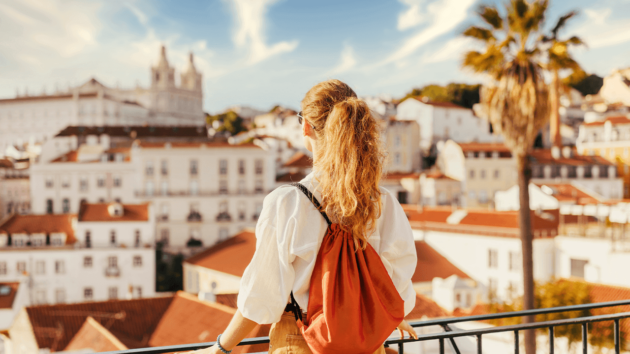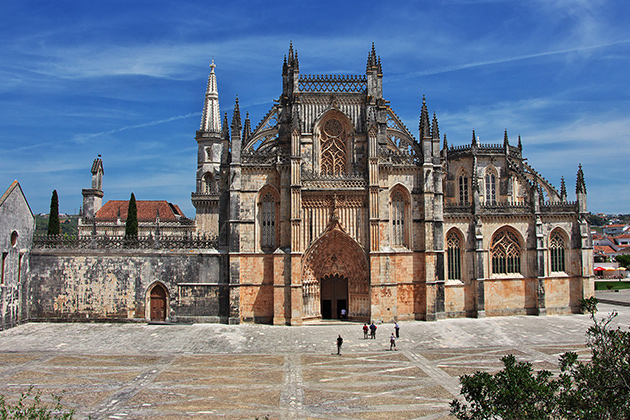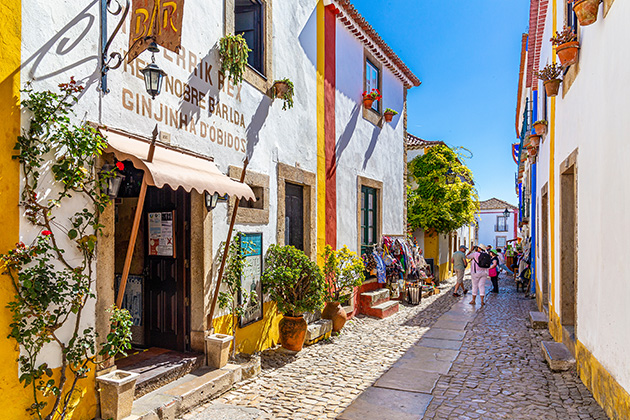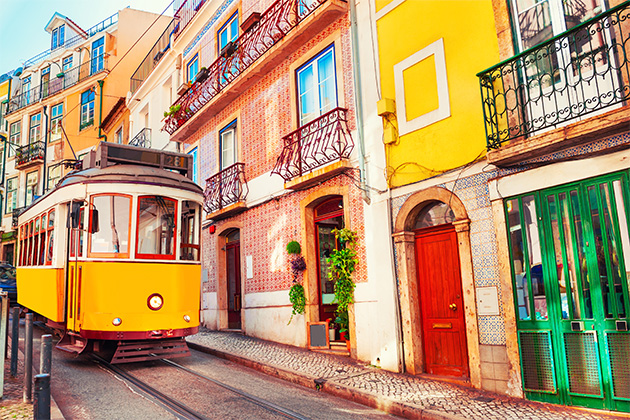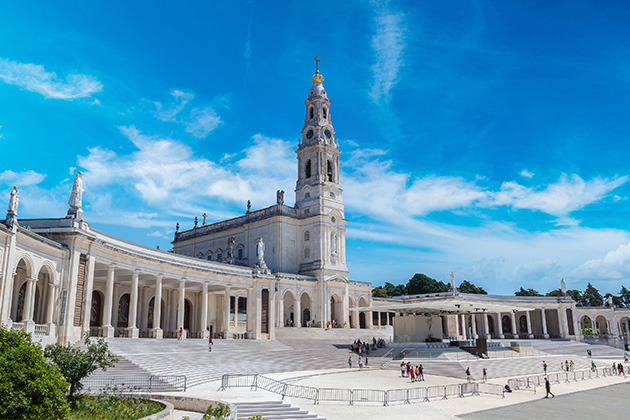
The Shrine of Our Lady of Fátima dates to the beginning of the XX Century and, besides placing Portugal firmly on the map of Catholic sites, has helped promote Portuguese traditions and customs abroad.
The beginning
On 13 May 1917, Lúcia dos Santos, Francisco Marto and Jacinta Marto, aged ten, nine and seven, respectively, claimed to have seen a “lady, brighter than the sun” over a Holm Oak tree, while they were tending to their flock. The place was called Cova da Iria, near Aljustrel, Fátima, and according the children’s account only Lúcia could see and hear “the lady”, with whom she conversed, whereas Jacinta could see and hear her but Francisco was only able to see, but didn’t hear.
The “lady” asked Lúcia to return on the same day, at the same time, for six months, after which she would reveal what it was she wanted of them. All that she asked meanwhile was that they recite the rosary every day to achieve peace in the world and an end to the World War. They said there were four apparitions overall – three in the same place and a fourth in Valinhos, Aljustrel, and that at each of these apparitions Our Lady provided more details.
She is said to have shown them the Sacred Heart of Mary, pierced with thorns (representing the offence caused by the sins of mankind, for which she requested reparation), as well as what came to be known as the three secrets of Fátima (a vision of hell; the immaculate heart of Mary, with the request for prayer for peace and the promise of the conversion of Russia and the vision of the attempt on the life of the Pope – which has been taken to refer to John Paul II – and which would remain a secret for many years). In the course of these apparitions Our Lady also asked that a Chapel be built in her honour, in the name of Our Lady of the Rosary.
These apparitions ended on 13 October with the Miracle of the Sun, which was witnessed by 70 thousand people and which consisted of changes in the atmospheric conditions, including the transformation of the sun into “an opaque disc that spun in the sky” and that zigzagged.
There are claims that miraculous healings took place during this event, some of which were later verified by doctors. The events would come to be officially recognised as miracles by the Catholic Church, in 1930, and the apparitions themselves considered worthy of belief.
Lúcia lived to the age of 97, having become a nun with the Dorotheans but later entering a discalced Carmelite cloister in Coimbra. Her cousins, the siblings Francisco and Jacinta died young of the Spanish Influenza and were beatified by John Paul II and later canonised by Pope Francis, thereby becoming the first non-martyr child saints of the Catholic Church.
The Shrine of Our Lady of Fátima
Although the Church officially calls it the Shrine of Our Lady of The Rosary of Fátima, it is internationally recognised as the Shrine of Our Lady of Fátima. The Holy See had it raised to the status of National Shrine and it is one of the most important Marian shrines as well as one of the main destinations in terms of religious tourism.
Construction began in 1919 when the Chapel of the Apparitions started being erected. By this time crowds of people were already swarming to the site, and even though the Hierarchy maintained reservations regarding the phenomenon and had not immediately authorized the building of a church, by 1919 the chapel that Our Lady had requested had been completed.
The famous image of Mary that graces the chapel was created the following year by José Ferreira Thedim, and was blessed and enthroned in the same year. With the number of pilgrims growing year by year it became necessary to provide the area with the conditions required for celebrations, leading the Church to purchase the land surrounding Cova da Iria so as to build the Shrine of Our Lady of Fátima.
Interestingly, two years later there was an attempt to blow up the chapel. Although the criminals were never caught, the charges did explode and caused some damage, but the chapel survived. This strengthened the idea, amongst the population, that the building was under divine protection and may have accelerated the process for the Church to give it its full backing.
Once the chapel had been restored buildings were quickly erected to host the pilgrims, as well as a covered fountain and an avenue was opened from the entrance of the Shrine of the chapel, flanked by a Way of the Cross. This is when the organised pilgrimages, candle-lit processions and ceremonies began.
The canonical process was concluded on 13 October, 1930, with the apparitions declared worthy of belief and the approval of the cult of Mary under the guise of Our Lady of the Rosary of Fátima.
Over the years the Shrine of Our Lady of Fátima has grown and currently includes two basilicas to ensure that pilgrims are sheltered from harsher weather. The shrine includes the aforementioned Chapel of the Apparitions, the prayer space, the Basilica of Our Lady of the Rosary, the Colonnade, the Basilica of the Holy Trinity, the Nossa Senhora do Carmo and Nossa Senhora das Dores retreat centres, a Way of the Cross in Valinhos and the Paulo VI Pastoral Centre.
The Shrine has a reputation for excellence in terms of pilgrimages and has become very relevant both in Portugal and abroad.
The birth of a city-shrine
The impact of the creation of the Shrine of Our Lady of Fátima on the region, following the official recognition of the apparitions by the Church, was enormous and has never stopped growing.
Fátima went from anonymity to international fame. The scrubland of Cova da Iria quickly became the most important point of pilgrimage in the country and the locals took advantage of the economic and labour opportunities that arose because of it.
Despite its anticlerical nature, the Republican civil administration could do nothing to stop this growing and powerful movement. The public demonstrations of faith were an affront the Republican law, but to fight it would be useless. The largest impact of the shrine’s birth, however, was on the local church (and a positive one at that) and on the Catholic Church in general.
Fátima would go on to become one of the most important destinations of religious tourism in the world, with all the inherent consequences. In 2017, for instance, Pope Francis’ visit generated 4.5 million euros in lodgings, 1.5 million in meals and 10 million in sales in the region of the shrine and two others, according to figures provided by the Regional Tourism Board and the Business Association of Ourém-Fátima.
These figures also show that Portugal ranks ninth in terms of tourists to Fátima, behind Brasil, USA, South Korea, Spain and Poland. There are even plans to adapt the Monte Real Air Base for commercial flights, since Fátima seems to be the only shrine-city that is not served by an airport.
The social, economic and regional benefits to the region are undeniable, and all this began on a morning in May 1917, when a 10-year-old girl asked: “What do you want from me?”
